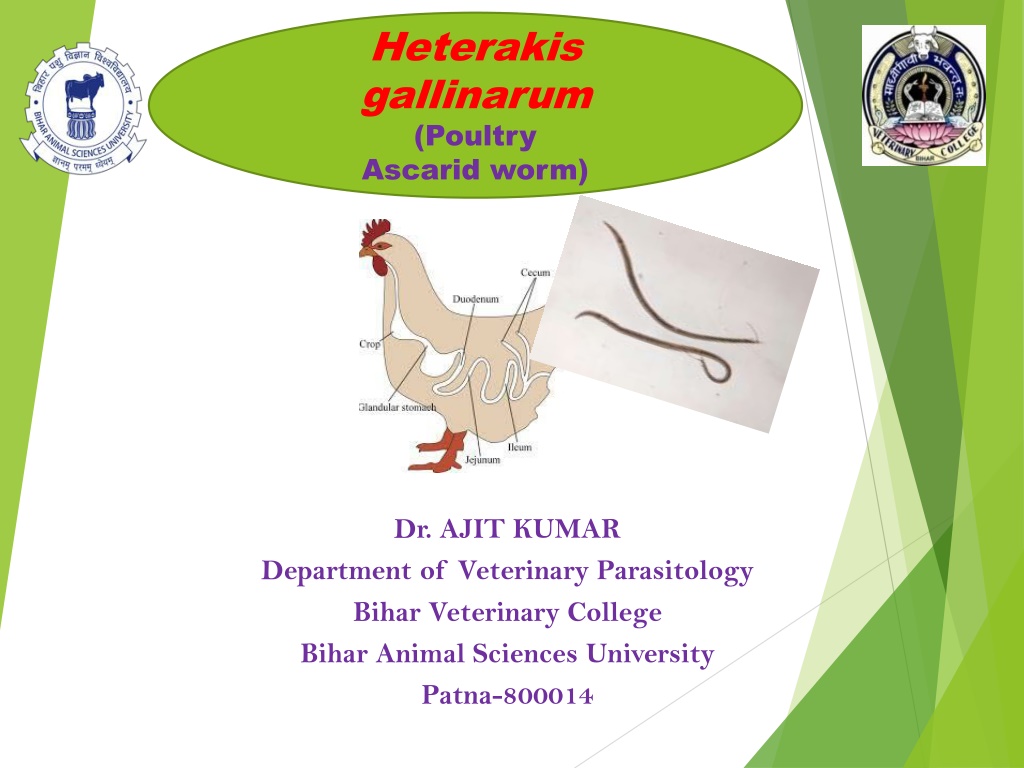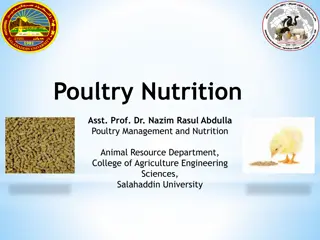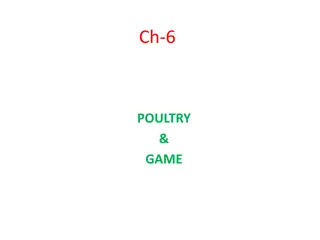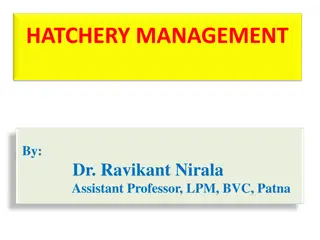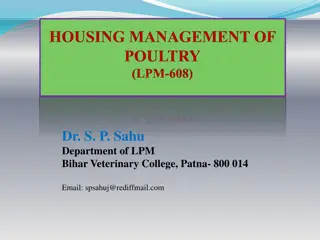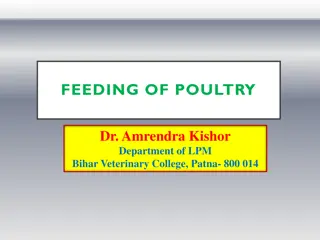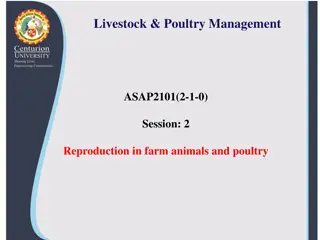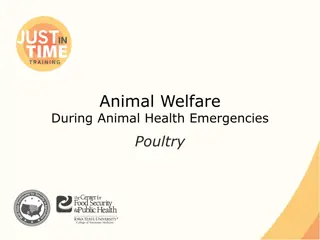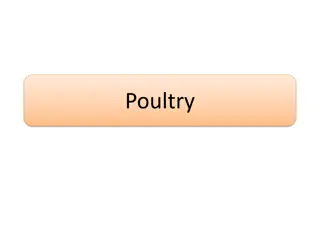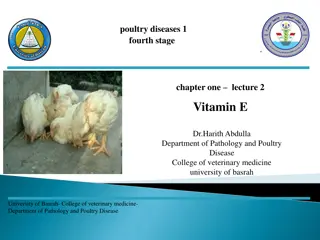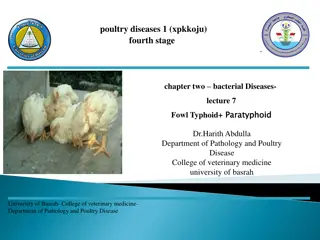Understanding Heterakis Gallinarum: Poultry Ascarid Worm
Heterakis gallinarum, a caecal worm found in domestic and wild birds, plays a role in transmitting Histomonas meleagridis, causing diseases like blackhead in turkeys. Clinical signs include anaemia, diarrhoea, and emaciation. Diagnosis involves microscopic examination, and treatment with fenbendazole or phenothiazine is effective.
Download Presentation

Please find below an Image/Link to download the presentation.
The content on the website is provided AS IS for your information and personal use only. It may not be sold, licensed, or shared on other websites without obtaining consent from the author. Download presentation by click this link. If you encounter any issues during the download, it is possible that the publisher has removed the file from their server.
E N D
Presentation Transcript
Heterakis gallinarum (Poultry Ascarid worm) Bihar Animal Sciences University | Dr. AJIT KUMAR Department of Veterinary Parasitology Bihar Veterinary College Bihar Animal Sciences University Patna-800014
Heterakis gallinarum Final Hosts Final Hosts : Domestic & wild birds : Domestic & wild birds Location: Caecum Location: Caecum Caecal Caecal worm of poultry worm of poultry
Heterakis gallinarum General Characters: Marked Males are smaller and shorter, about 9 mm in length, with a unique bent Females are stouter and longer about 13 mm in length, with a straight tail end. sexual dimorphism. o tail whereas o Oesophagus posterior bulb and spicules are unequal in length has large o Male worm has 12 pairs anal papillae. o Egg is oval with smooth shells
Heterakis gallinarum Life Life- -cycle cycle: : o Similar to Ascaridia galli. o Infective containing 2nd stage larvae. stage: egg o Transport host: Earthworm Transmission: Transmission Transmission through 1. I Ingestion of infective egg ngestion of infective egg containing containing L L2 water water 2. Eggs are sometimes ingested by earthworms, which may act as transport host. So, ingestion of earthworm containing L2 larva 1. 2 with food or with food or
Heterakis gallinarum Pathogenesis: Worms are usullay non-pathogenic but it s important role is transmission of Histomonas meleagridis (protozoa). Histomonas meleagridis hepatitis or black head disease in turkey. Protozoa remain safe inside the infective eggs of the nematode against the lethal effect of the anterior part of the digestive tract of the bird on ingestion of eggs by them and reach caeca in viable state. Worms cause nodular typhlitis. (protozoa) causes entero-
Heterakis gallinarum Clinical signs: Nodular anaemic, and diarrhoea. typhalitis, emaciation
Heterakis gallinarum Diagnosis : o On the basis of Clinical signs o Microscopic faecal examination o Small adult worms are found in the caeca during necropsy
Heterakis gallinarum Treatment Fenbendazole Phenothiazine @ 0.5- 1 gm/ bird are effective.
Heterakis gallinarum Control: Treatment of infected birds Regular deworming Regular cleaning of floor , feeding and watering utensils etc. Segregation of adult and young birds
THANK YOU
